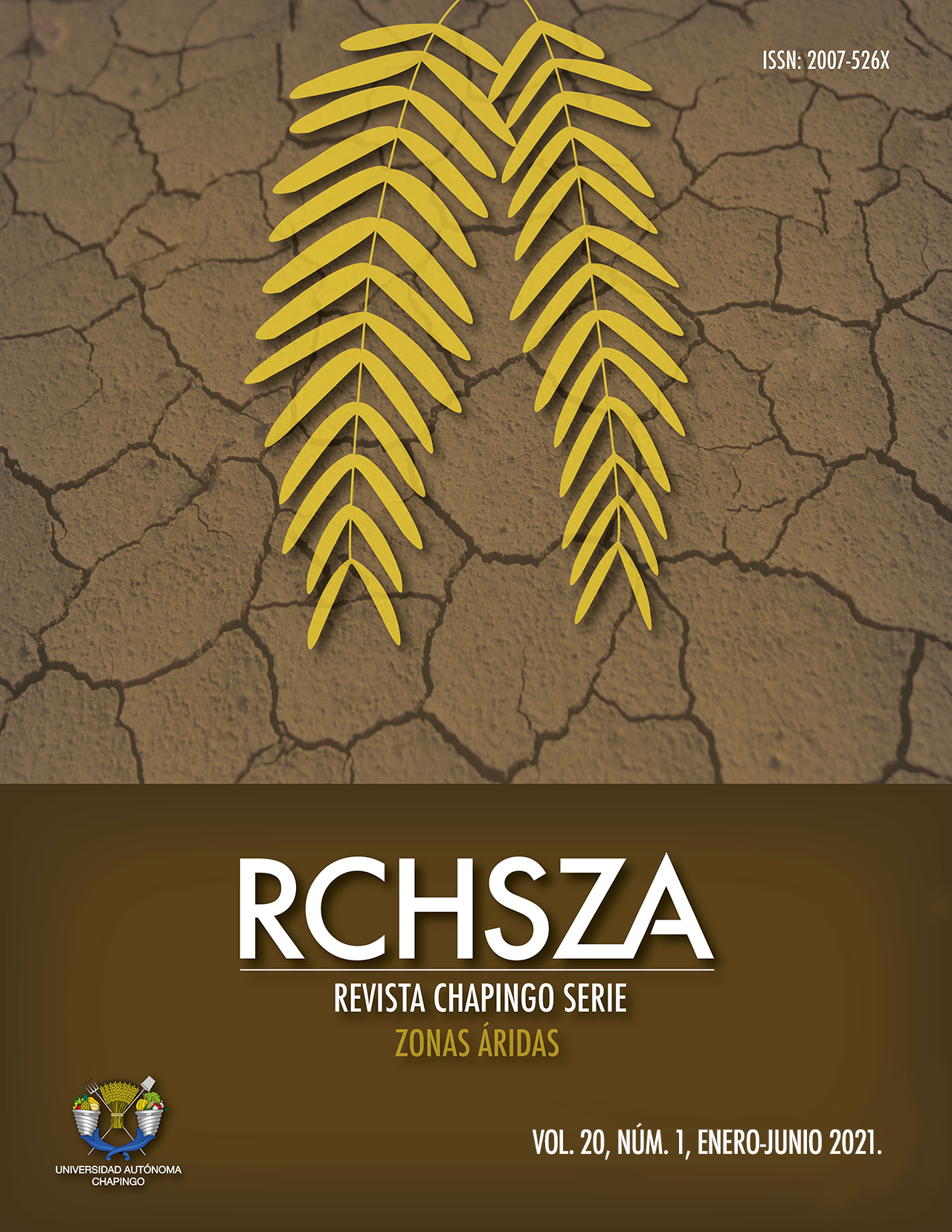Resumen
El ácido carmínico es una sustancia que probablemente funciona como protección ante la depredación. Su concentración difiere entre Dactylopius coccus y D. opuntiae. Entonces, planteamos la hipótesis de que un depredador específico, el coccinélido Hyperaspis trifurcata, tendría una preferencia alimentaria por la especie con menor concentración de ácido carmínico. Para comprobar esta hipótesis se realizaron pruebas de elección con ambas especies en condiciones de laboratorio (25 ± 2 °C, 50 ± 20 % HR, y 12:12 h L:O). En la primera prueba, el depredador tuvo opción de alimentarse de ninfas de primer ínstar de ambas especies de presas, y en el segundo de hembras grávidas. H. trifurcata consumió ninfas de primer ínstar de ambas especies, y no mostró preferencia por alguna de ellas. En ese estado de desarrollo la concentración de ácido carmínico entre especies fue similar. Sin embargo, H. trifurcata prefirió alimentarse de hembras grávidas de D. opuntiae con una concentración de ácido carmínico de 3 %, mientras que dicho contenido fue de 23 % en D. coccus. Nuestros resultados apoyan la hipótesis de que H. trifurcata prefiere alimentarse de D. opuntiae en lugar de D. coccus debido a la concentración de ácido carmínico, o de algunos de sus precursores metabólicos
Citas
Aldama-Aguilera, C., & Llanderal-Cázares, C. (2003). Cochineal: comparison of production methods in cut cladodes. Agrociencia, 37, 11-19. https://www.colpos.mx/agrocien/Bimestral/2003/ene-feb/ene-feb-03.html
Aldama-Aguilera, C., Llanderal-Cázares, C., Soto Hernández M., & Castillo-Márquez L. E. (2005). Cochineal (Dactylopius coccus Costa) production in prickly pear plants in the open and in microtunnel greenhouses. Agrociencia, 39, 167-171. https://www.colpos.mx/agrocien/Bimestral/2005/mar-abr/mar-abr-05.html
Chávez-Moreno, C. K., Tecante, A., & Casas, A. (2009). The Opuntia (Cactaceae) and Dactylopius (Hemiptera: Dactylopiidae) in Mexico: a historical perspective of use, interaction and distribution. Biodiversity and Conservation, 18, 3337-3355. DOI: https://doi.org/10.1007/s10531-009-9647-x
Cruz-Rodríguez, J. A., González-Machorro, E., Villegas, A., Rodríguez, M., Mejía, F. (2016). Autonomous biological control of Dactylopius opuntiae (Hemiptera: Dactylopiidae) in a prickly pear plantation with ecological management. Environmental Entomology, 45, 642-648. DOI: https://doi.org/10.1093/ee/nvw023
Dobzhansky, T. H. (1941). Beetles of genus Hyperaspis inhabiting the United States. Smithsonian Miscellaneous Collections, 101, 1-94. https://repository.si.edu/handle/10088/23721
Eisner, T., Nowicki, S., Goetz M., & Meiwald, J. (1980). Red cochineal dye (carminic acid): its role in nature. Science, 208, 1039-1042. DOI: https://doi.org/10.1126/science.208.4447.1039
Eisner, T., Ziegler, R., McCormick, J. L., Eisner, M., Hoebeke, E. R., & Meinwald, J. (1994). Defensive use of an acquired substance (carminic acid) by predaceous insect larvae. Experientia, 50, 610-615. DOI: https://doi.org/10.1007/bf01921733
Flores-Alatorre, H. L., Abrego-Reyes, V., Reyes-Esparza, J. A., Angeles, E., & Alba-Hurtado, F. (2014). Variation in the concentration of carminic acid produced by Dactylopius coccus (Hemiptera: Dactylopidae) at various maturation stages. Journal of Economic Entomology, 107, 1700-1705. DOI: https://doi.org/10.1603/ec13475
Gilreath, M. E., & Smith, J. W. Jr. (1988). Natural enemies of Dactylopius confusus (Homoptera: Dactylopiidae): exclusion and subsequent impact on Opuntia (Cactaceae). Environmental Entomology, 17, 730-738. DOI: https://doi.org/10.1093/ee/17.4.730
Griffith, M. P. (2004). The origins of an important cactus crop, Opuntia ficus-indica (Cactaceae): new molecular evidence. American Journal of Botany, 91, 1915-1921. DOI: https://doi.org/10.3732/ajb.91.11.1915
Lopes, E. B., Brito, C. H., Albuquerque, I. C., & Luna, J. (2009). Desempenho do óleo de laranja no controle da cochonilha-docarmim em palma gigante. Engenharia Ambiental - Espírito Santo do Pinhal, 6, 252- 258.
Mazzeo, G., Nucifora, S., Russo, A., & Suma, P. (2019). Dactylopius opuntiae, a new prickly pear cactus pest in the Mediterranean: an overview. Entomologia Experimentalis et Applicata, 167, 59-72. DOI: https://doi.org/10.1111/eea.12756
Mendel, Z., Protasov, A., Vanegas-Rico, J. M., Lomeli-Flores, J. R., Pompeo, S., & Rodríguez-Leyva, E. (2020). Classical and fortuitous biological control of the prickly pear cochineal Dactylopius opuntiae in Israel. Biological Control, 142, 104157. DOI: https://doi.org/10.1016/j.biocontrol.2019.104157
Portillo, L., Vigueras, A. L. (1998). Natural enemies of cochineal (Dactylopius coccus Costa): importance in México. Journal of Professional Association Cactus, 3, 43-49.
Portillo, L., Vigueras, A. L. (2006). A review on the cochineal species in México, host and natural enemies. Acta Horticulturae, 728, 249-256. DOI: https://doi.org/10.17660/ActaHortic.2006.728.35
Rodríguez-Leyva, E., Lomeli-Flores, J. R., y Vanegas-Rico J. M. (2010). Enemigos naturales de la grana cochinilla del nopal Dactylopius coccus Costa (Hemiptera: Dactylopiidae), pp. 101-112. In: Portillo, L. y Vigueras, A. L. (Eds.) Conocimiento y aprovechamiento de la grana cochinilla, Colegio de Postgraduados®, México.
SAS Institute. (2017). SAS/OR 9.4 User’s Guide: Mathematical Programming Examples. SAS institute. SAS Institute Inc., SAS Campus Drive, Cary, North Carolina 27513.
Ülgentürk, S., & Hocaali, S. S. (2019). Pest status of Dactylopius opuntiae (Cockerell) (Hemiptera: Dactylopiidae) and new records of scale insects from northern Turkish Republic of Cyprus. Munis Entomology & Zoology, 14, 294-300.
Vanegas-Rico, J. M., Lomeli-Flores, J. R., Rodríguez-Leyva, E., Mora-Aguilera, G., & Valdez, J. M. (2010). Enemigos naturales de Dactylopius opuntiae (Cockerell) en Opuntia ficus-indica (L.) Miller en el centro de México. Acta Zoológica Mexicana (n.s.), 26, 415-433. DOI: https://doi.org/10.21829/azm.2010.262718
Vanegas-Rico, J. M., Pérez-Panduro A., Lomeli-Flores, J. R., Rodríguez-Leyva, E., Valdez-Carrasco, J. M., MoraAguilera, G. (2017). Dactylopius opuntiae (Hemiptera: Dactylopiidae) population fluctuations and predators in Tlalnepantla, Morelos. Folia Entomológica Mexicana (n.s.), 3, 23-31. http://www.folia.socmexent.org/revista/Num%202017_2/FEM_ns3(2)_2007.pdf
Vanegas-Rico, J. M., Rodríguez-Leyva, E., Lomeli-Flores, J. R., González-Hernández, H., Pérez-Panduro, A., & MoraAguilera, G. (2016). Biology and life history of Hyperaspis trifurcata feeding on Dactylopius opuntiae. BioControl, 61, 691-701. DOI: https://doi.org/10.1007/s10526-016-9753-0

Esta obra está bajo una licencia internacional Creative Commons Atribución-NoComercial 4.0.
Derechos de autor 2021 Revista Chapingo Serie Zonas Áridas



